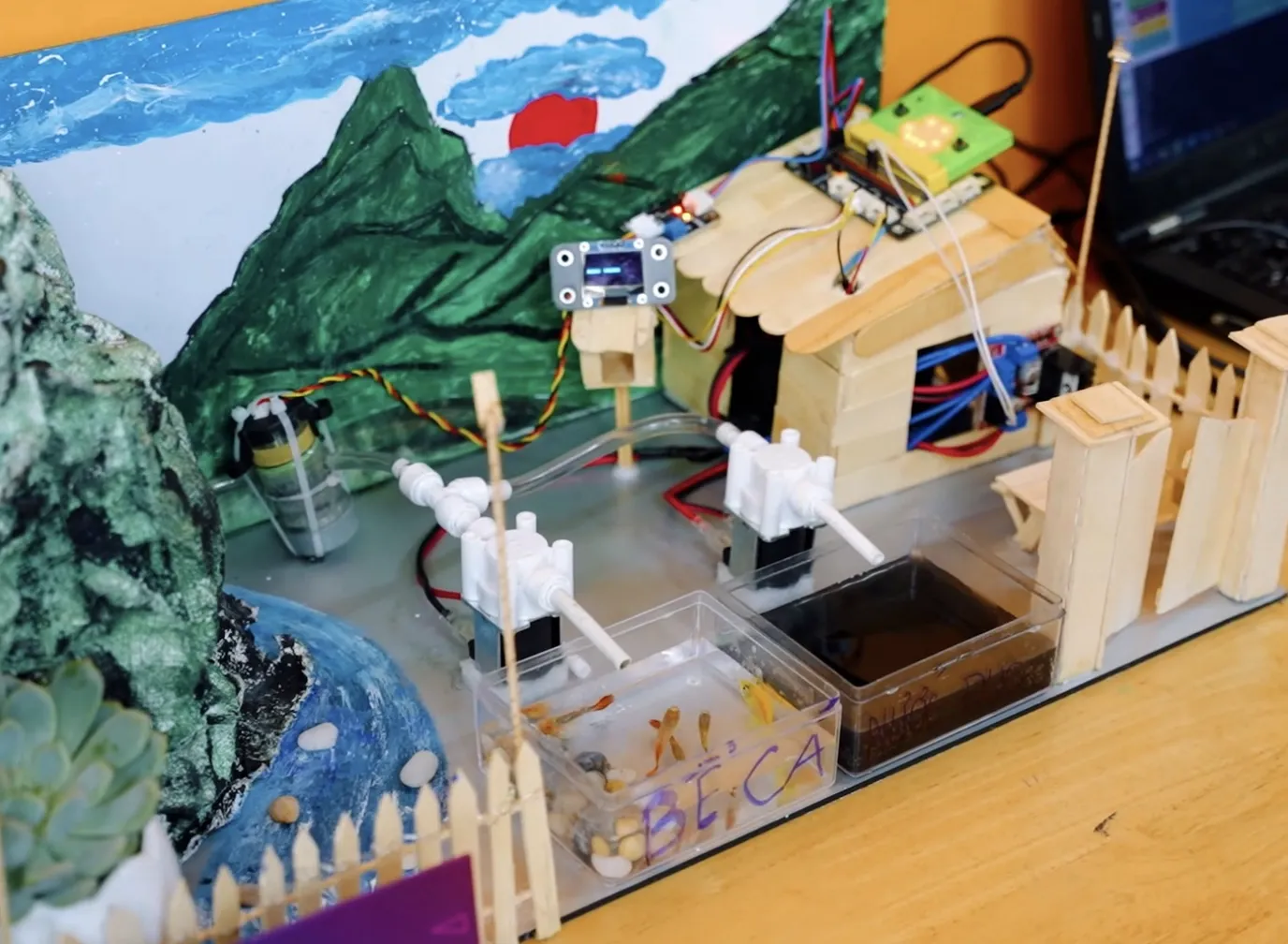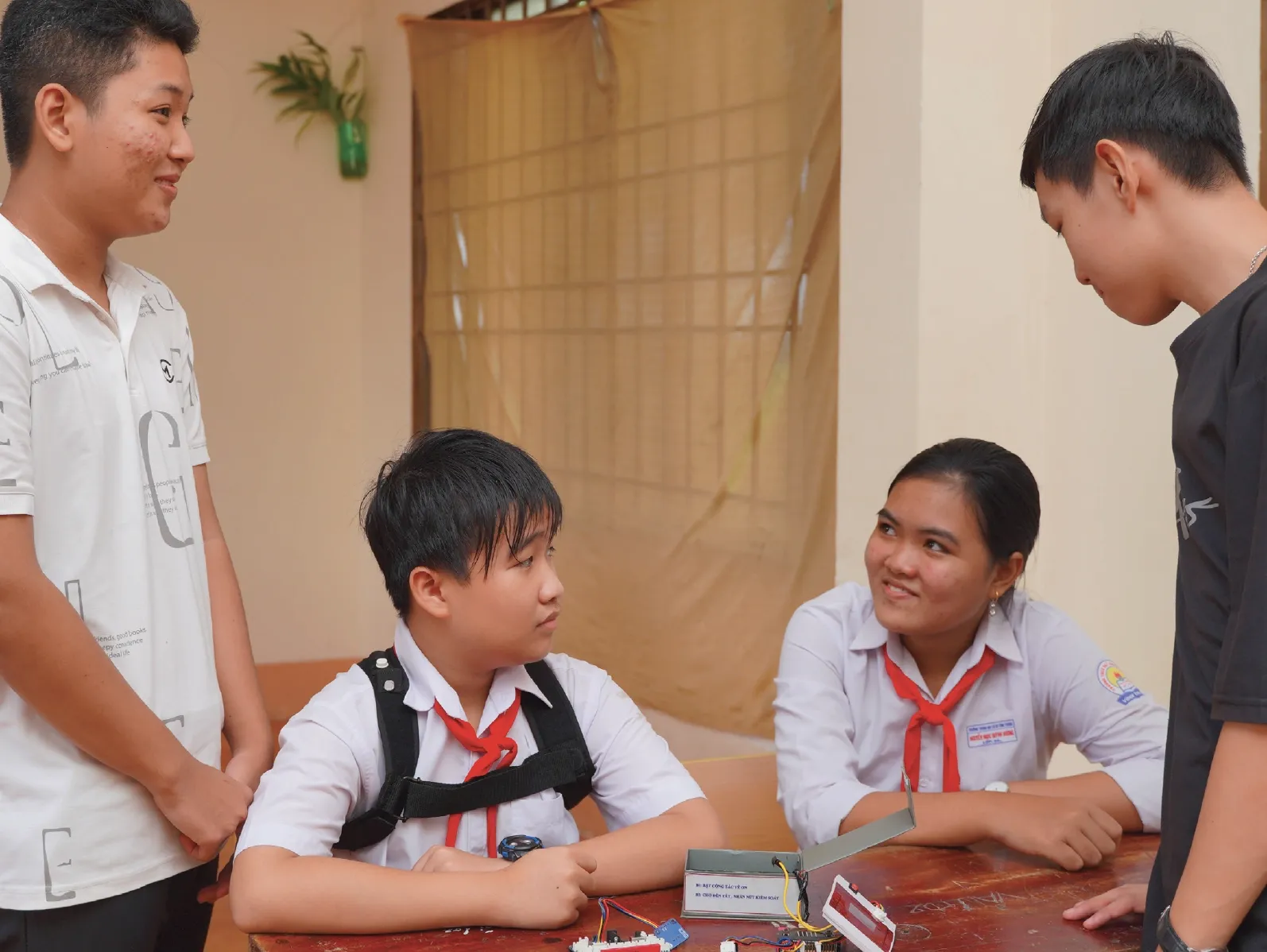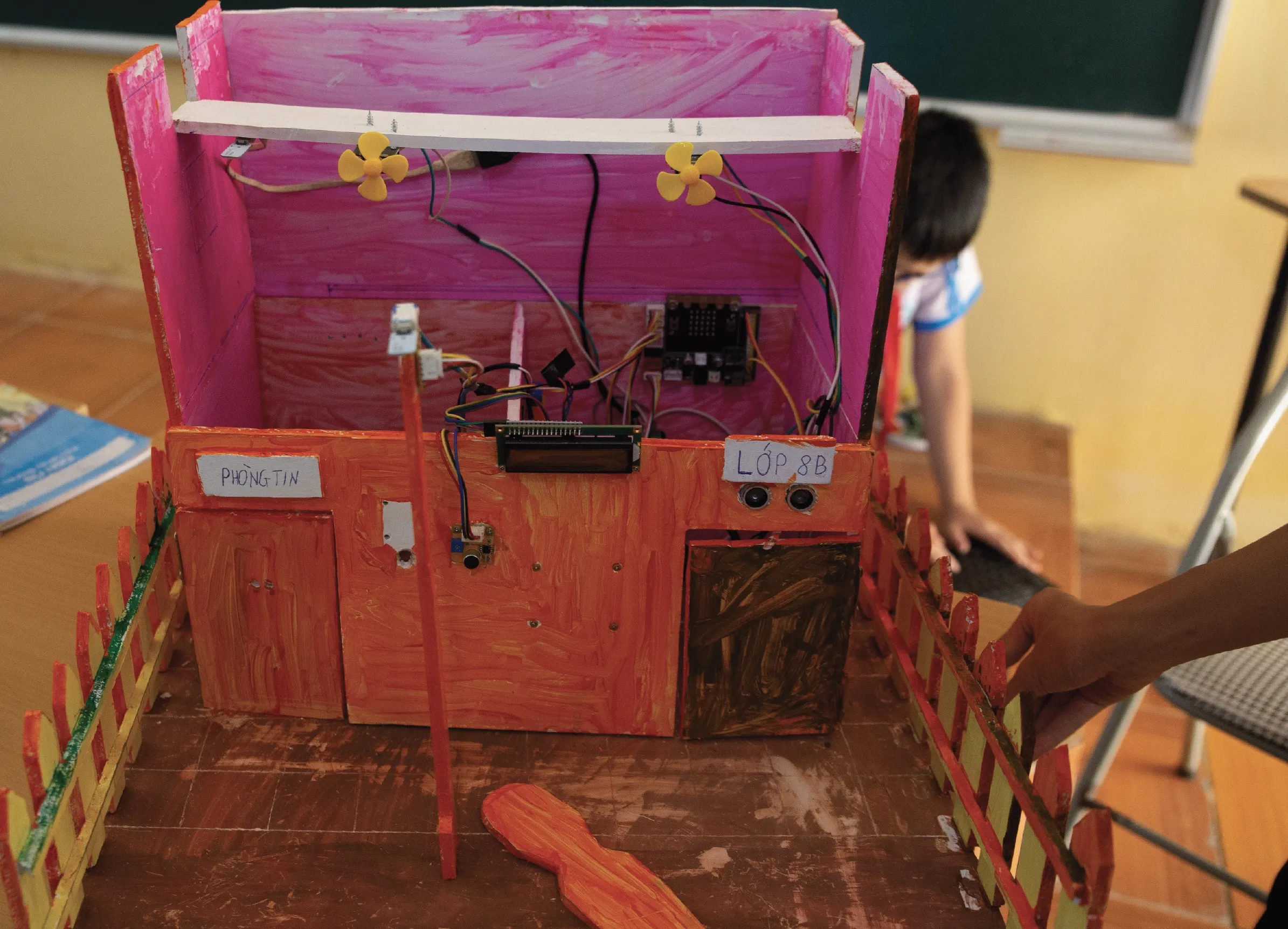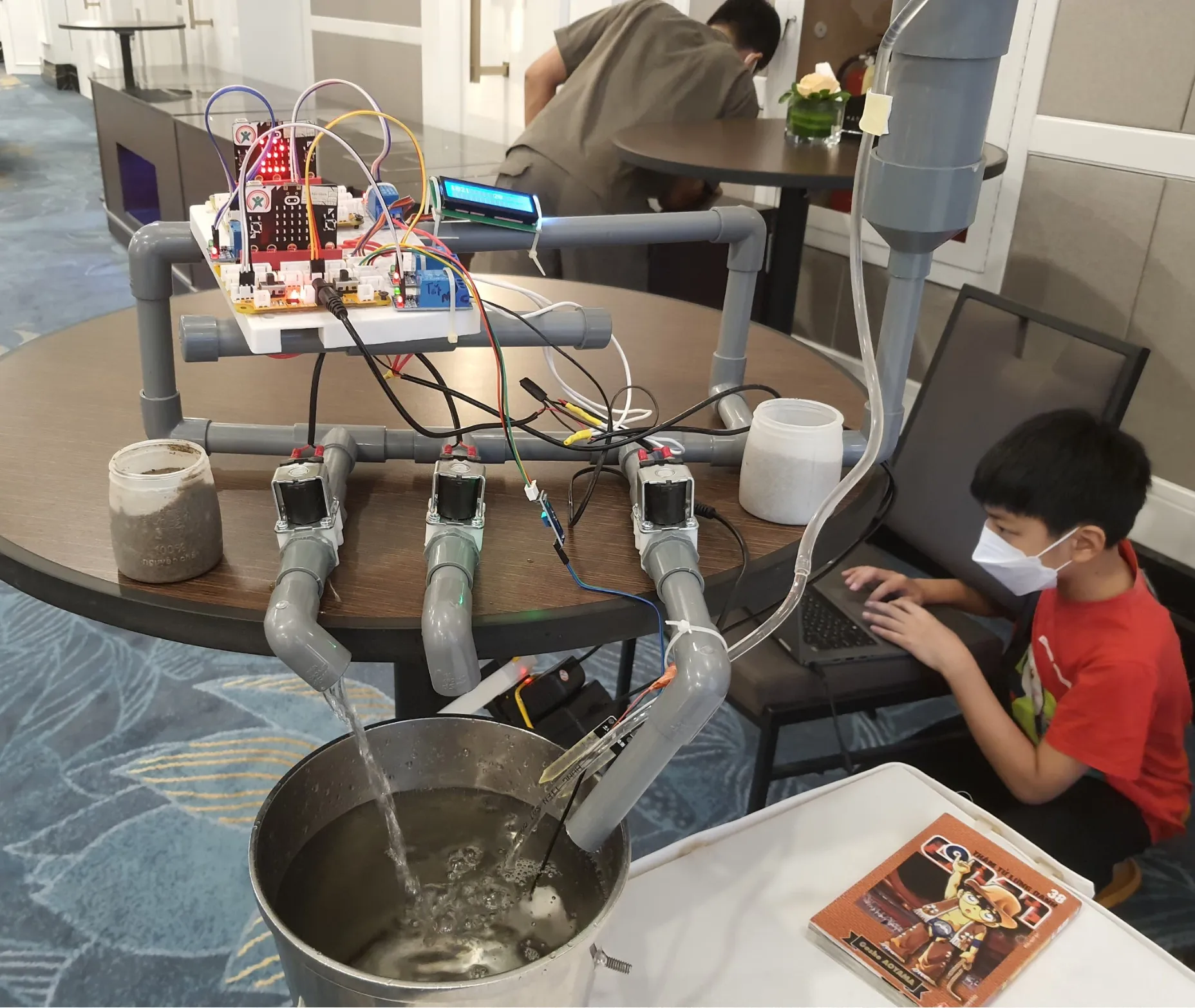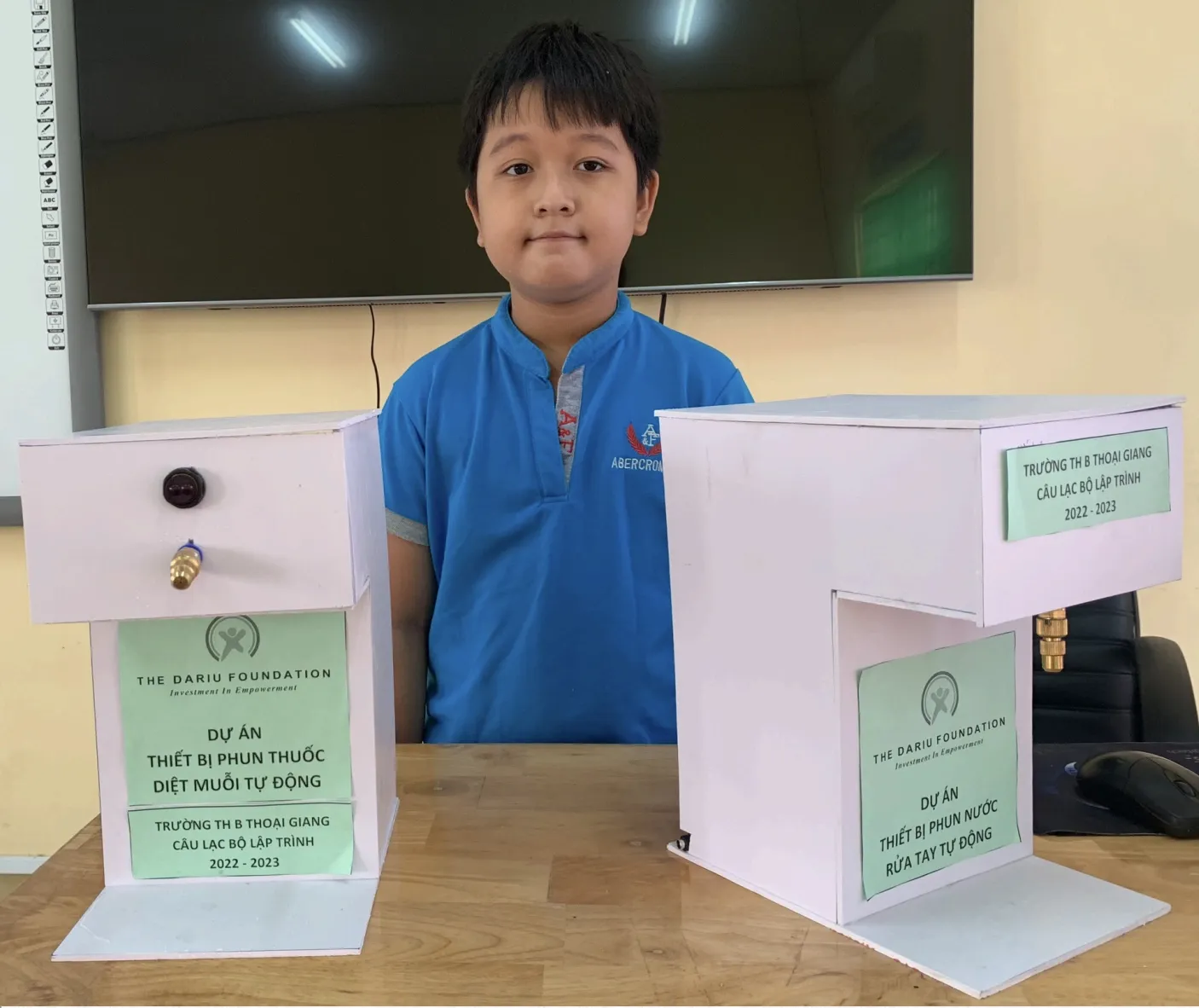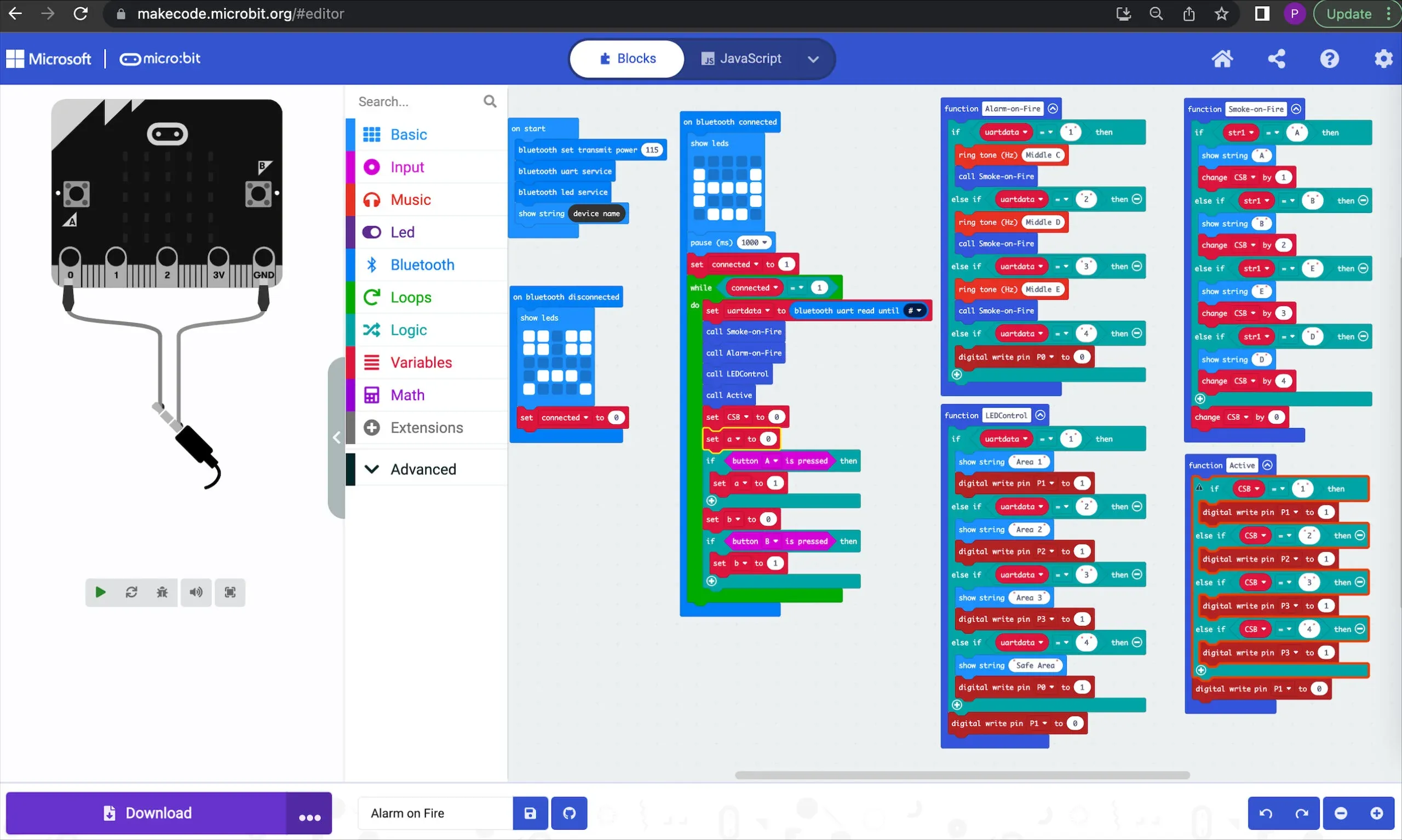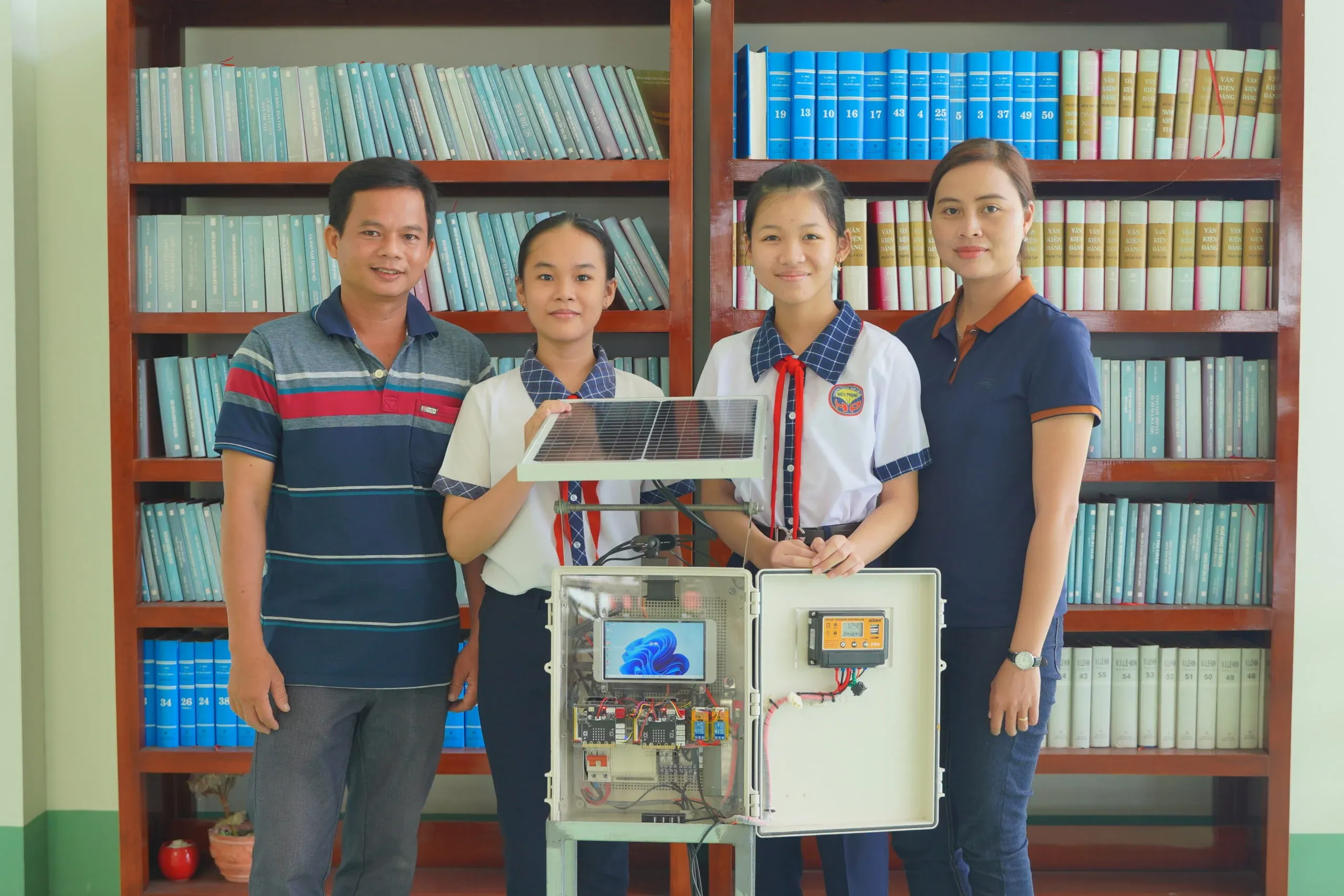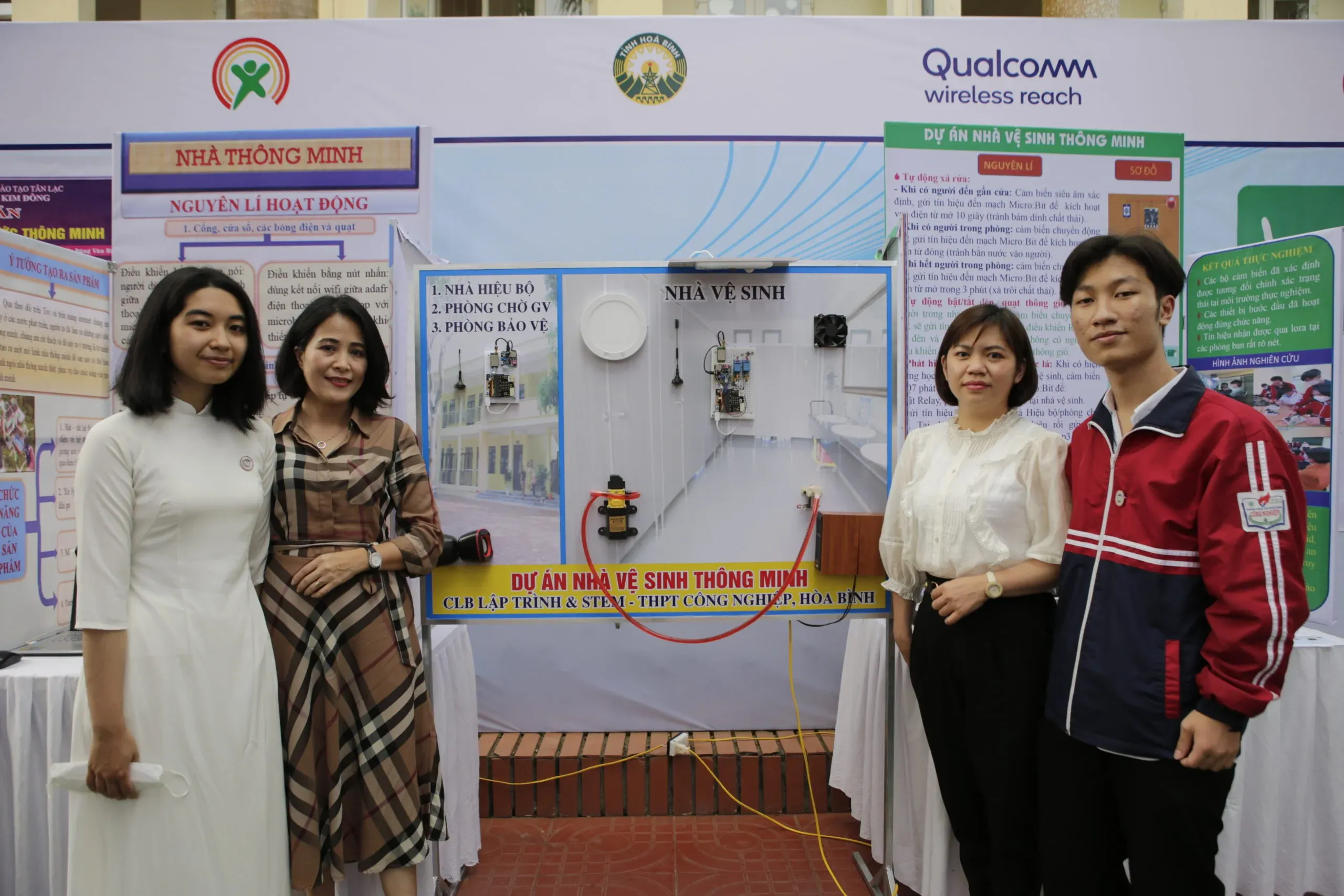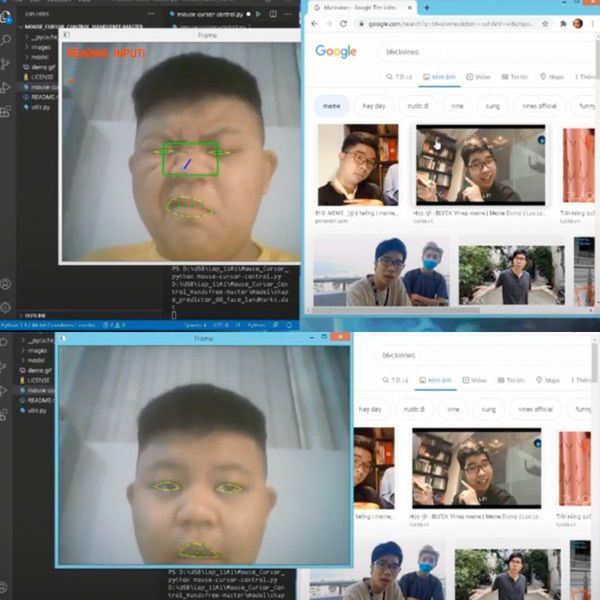Smart control system for sturgeon farm
Sturgeons require moderate temperatures for ideal growth and ample supply of clean water.
Local farmers often use stream water from high mountain, for which it is difficult to control the cleanliness/
clarity of supply water. Therefore, they spend a lot of time controlling the water supply manually. Our team offers a smart solution for this problem.
How does it work?
Sensors are installed to measure the cleanliness/clarity of the water. At a previously fixed level, the valves will be opened to supply water into the pool of
sturgeons. If the water is not clear, the valves will remain closed. If the valves are closed for a certain period of
time, the system will send an alarm to the farmers, so that they
can find a different source of water supply for the fish pools.


